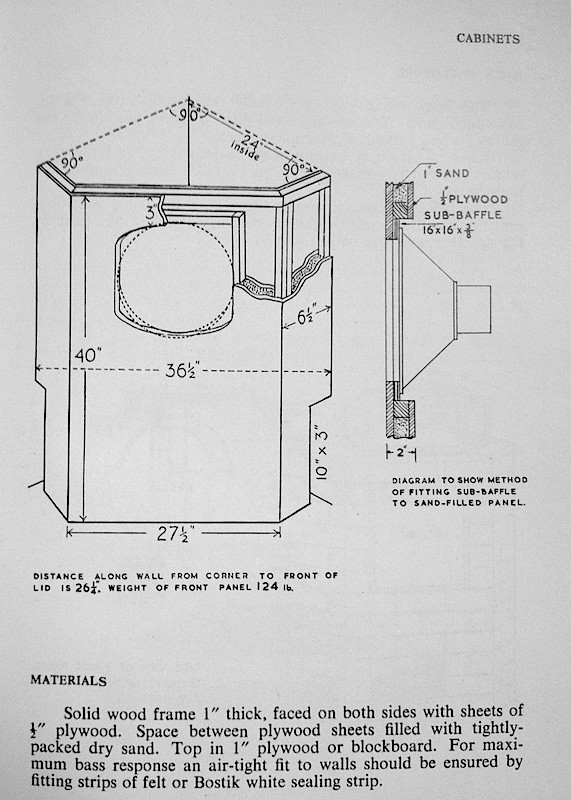Tony L
Administrator
I suspect the time is approaching to give some very serious thought to some better cabinets for my 15" Monitor Golds.
The safe route is just to commission a really nice and solidly engineered and finished York clone as I have a pair built to original spec at present and they do work fairly well in the room despite being a bit muddy and lacking in mid-band clarity (known issues with original spec Yorks as the baffle board is way, way too thin and resonant for the job in hand and the port math not quite right). Mine are built very precisely to the original York plans with the same (far too thin) panels etc. Lockwood Majors are a very similar thing so influences can be taken there too. I'd actually be tempted to buy a real pair if a really nice clean pair without drivers popped up. I'd like corner Yorks too, but I suspect they'd be crazy expensive to commission.
I think I'm pretty sure R-GRFs are not for me. Certainly whenever I've heard them I've felt the bass remarkably uneven, I don't think they'd work in my room either. Too much of a risk anyway.
Infinite baffles are an option as I very much liked my first pair in their crazily over-engineered corner cabs that were close in volume to corner Lancs but about 5 times heavier! They had great tight and agile bass even if not the last word in extension and better mid clarity than the flimsy York clones I currently have if not the ease/scale.
An outsider, but one I'm really interested in, is an Onken cab. These are more often used with Altecs etc, but I see no reason why they'd not be a good option with Tannoys and I love the looks. See post 6 of this AudioHeritage thread.
Whatever I decide on will need to be built professionally as I do not have the skills and it will need to be done to a very high standard too, so I'm also looking at options there too. I definitely want a traditional looking well-finished (veneered or really nicely finished plywood) wide-baffle speaker with a grill.
Any ideas? I'm not going to rush this, the thinking may take a year or so!
The safe route is just to commission a really nice and solidly engineered and finished York clone as I have a pair built to original spec at present and they do work fairly well in the room despite being a bit muddy and lacking in mid-band clarity (known issues with original spec Yorks as the baffle board is way, way too thin and resonant for the job in hand and the port math not quite right). Mine are built very precisely to the original York plans with the same (far too thin) panels etc. Lockwood Majors are a very similar thing so influences can be taken there too. I'd actually be tempted to buy a real pair if a really nice clean pair without drivers popped up. I'd like corner Yorks too, but I suspect they'd be crazy expensive to commission.
I think I'm pretty sure R-GRFs are not for me. Certainly whenever I've heard them I've felt the bass remarkably uneven, I don't think they'd work in my room either. Too much of a risk anyway.
Infinite baffles are an option as I very much liked my first pair in their crazily over-engineered corner cabs that were close in volume to corner Lancs but about 5 times heavier! They had great tight and agile bass even if not the last word in extension and better mid clarity than the flimsy York clones I currently have if not the ease/scale.
An outsider, but one I'm really interested in, is an Onken cab. These are more often used with Altecs etc, but I see no reason why they'd not be a good option with Tannoys and I love the looks. See post 6 of this AudioHeritage thread.
Whatever I decide on will need to be built professionally as I do not have the skills and it will need to be done to a very high standard too, so I'm also looking at options there too. I definitely want a traditional looking well-finished (veneered or really nicely finished plywood) wide-baffle speaker with a grill.
Any ideas? I'm not going to rush this, the thinking may take a year or so!


